Today's Notables
Xian Trip, Part 2
November 2010
Hisashi Furuichi
President and C.E.O.
In a previous issue of Notables, I talked about a government-run restaurant that served mutton soup with bread pieces. But immediately next door is a well-established dumpling (gyoza) restaurant that is famous both in and out of China. The day after visiting the mutton soup restaurant, I went to the dumpling restaurant. This was not just an ordinary dumpling restaurant. The restaurant, named Douphachan Jiaojzuguang, was established in 1936. Inside the huge, historical edifice was seating for an astounding 800 people. The offerings of dumpling were no less impressive than the imposing size of the building with 100 different types of dumpling of different ingredients. I selected a course of 19 varieties, each of which had its own character and features. All were very delicious and satisfying.
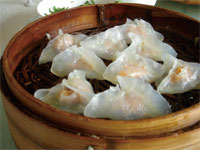 |
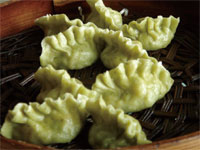 |
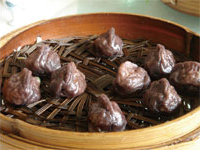 |
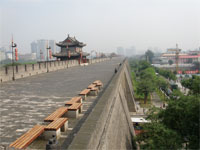
Speaking of historical structures, Xian is a unique city because it is encircled by a massive wall, called the Ming Wall, which was constructed in 1370. The base is about 15-18m wide and is 12m high. The top of the wall is about 12-14m wide, more expansive than most streets in Japan and wide enough for two-way traffic. The circumference is 13.7 km with a lookout tower every 120m. Gates to the city inside are located at each direction, north, south, east, and west. We visited the "Anteimon," the west entrance that is the famed terminus to the Silk Road. The city center inside the wall is completely equipped with a modern infrastructure--roads, telephone poles, etc. Of the cities in China I have visited, Xian is by far one of the nicest.
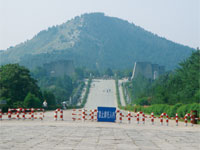
After visiting the walled city, we boarded a bus for one hour to visit the grave of the 5th emperor of Han Dynasty (like the huge ancient tombs in Japan). The massive approaching road took 53 years to build, and walking just part of it took everything I had. After that, we visited the Daigando (Giant Goose Pagoda) in the temple of Great Maternal Grace where high priests from the Tang Dynasty carried the sutras and Buddha statues to Chang'an (name of Xian when it was the ancient capital of China) from India along the Silk Road. Everywhere I looked, I was impressed by these structures and artifacts built over 1000 years ago.
HOME > What’s New > Today's Notables > Details














